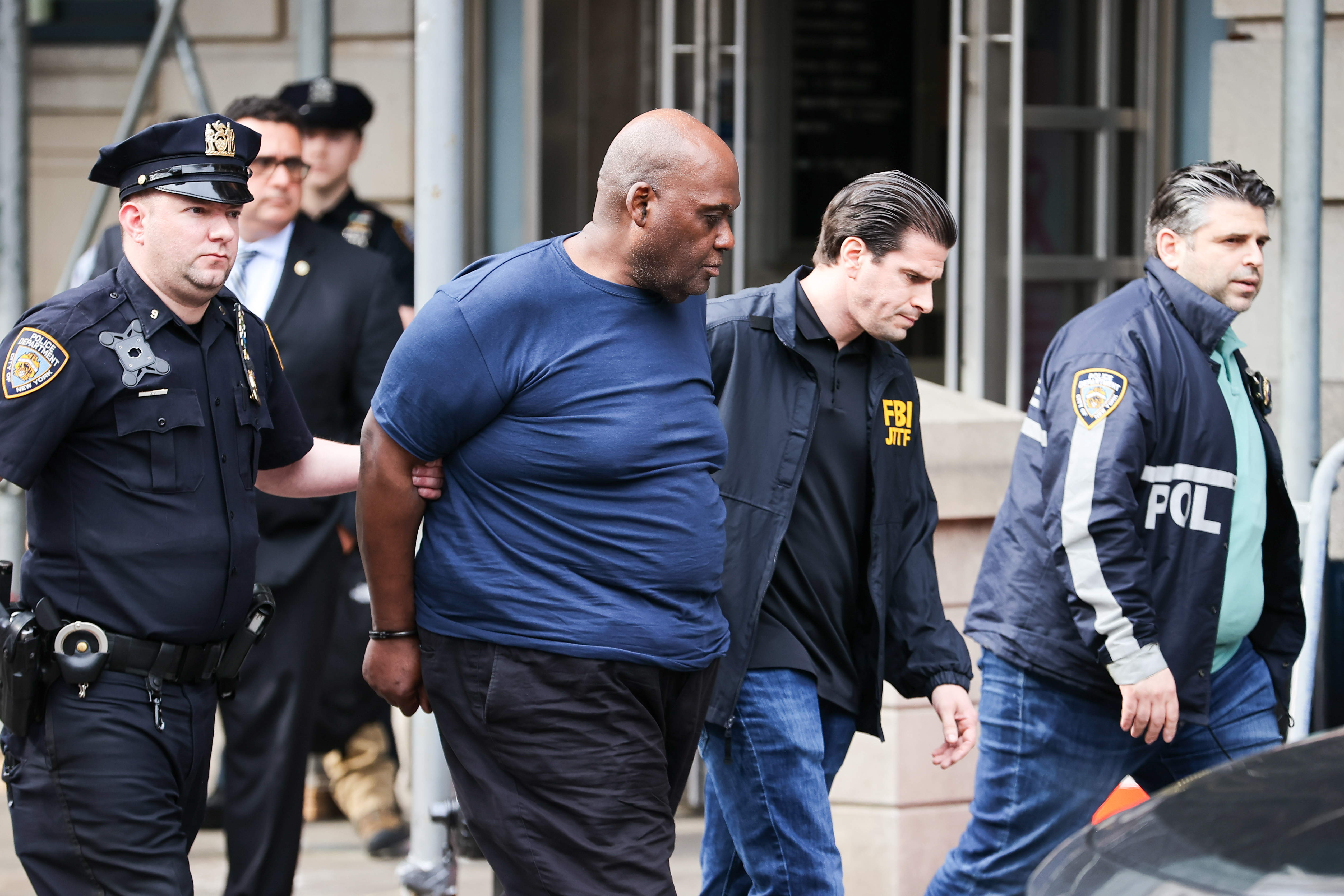As the suspect in the Brooklyn subway attack faced a judge for the first time since allegedly shooting 10 people and injuring even more, New Yorkers are eager to know what the MTA is looking to do to stop similar events from happening in the future.
While the transit agency said that more people rode the rails Thursday than during the manhunt for Frank James, they are still facing tough questions about why subway cameras that could have accelerated the search, investigation and arrest — ultimately failed.
MTA Chair Janno Lieber addressed and acknowledged security issues on Thursday. While police have been visible on the Sunset Park platform in the days since the attack unfolded, what are not visible are any cameras on the ceiling above — because there are none.
Where there is surveillance, at the subway turnstile, those cameras malfunctioned at a crucial time. Lieber tried to explain what exactly went wrong.
"The cameras themselves were working. It was the internet connection that apparently failed," he said.
Get Tri-state area news delivered to your inbox. Sign up for NBC New York's News Headlines newsletter.
The MTA stresses many of its cameras did work, including one at the Kings Highway station where the suspect apparently first entered the system two hours before the attack.
When pressed about the technology that didn’t function, Lieber said "when that became known that the camera was down, we had someone working on it the day before the attack.
"Listen, no excuses — we have to have these important security features working," he added.
MTA watchdogs say one improvement could be a warning system that is activated if cameras go offline.
"Some elevators and escalators send an alert if they’re not working. Is there a way for cameras to do that as well?" asked Lisa Daglian.
Not only are riders critical of the system failures ("I’m not surprised. Look at the stations they’re not well kept so that doesn’t surprise me," said commuter Gibril Barry of the surveillance not functioning), but now New York City Council is demanding answers.
In a letter Thursday, members stated “These gaps in our surveillance network prolonged the search for the suspect and potentially put many more people in danger." That letter also asked the MTA to provide a full list of all cameras in the system, and detail whether or not each camera records video.
The MTA said it is reviewing the City Council's request, and continued to point out that the vast majority of its network is reliable.
"There are 10,000 cameras, but we oughta focus and media oughta focus — how do we prevent these attacks?" Lieber asked.
The NYPD said in a statement that they communicate with the MTA when camera outages occur, and report issues to the agency to make them aware. They also said that camera malfunction on Tuesday did not hinder their investigation.
"At the time of the attack on Tuesday in Brooklyn, the cameras were out at three stations due to a technical issue. Statements that the lack of cameras on the station delayed the manhunt by many hours are unfair and misleading. We had witness descriptions of the suspect and the distinctive, bright colored clothing he wore during the attack," said the statement from NYPD Deputy Commissioner John Miller.
"The MTA cameras in other parts of the system were essential elements in determining his movements before and after the shootings. Their personnel worked with us around the clock to identify and retrieve images in this case," the statement continued. "While it has become routine to cast blame in many directions after an incident we should remember that the gunman is the sole party responsible for this attack."
But it doesn't all come down to cameras. Mayor Eric Adams has previously hinted at having gun-detecting technology added to subway stations.
That kind of tech is currently used in places like ballparks and stadiums, and on Wednesday, Adams said he would continue looking into technology that "can help keep people equal safe during this new climate of over-proliferation of guns."
Adams said the new devices are not like ones used at airports, but rather can be added without people even knowing that they are present.
"You just walk normally through the system. It is not even detectable that the devices are there," the mayor said. "We think there's some great promise in this technology. We are going to continue to explore that."
When asked about safety in the subway, Lieber said that the agency does not want to "create an environment where people can't go about their business and create something that's impractical." He noted that many people carry backpacks and other bags onto the subway every day, and that some devices would impede on their ability to get around quickly and easily.
Lieber, who said that they would not let the subway "be taken over by maniacs," called for more cops on subways and platforms in order to help those who feel vulnerable.
Police and security officials have made many attempts to harden the city against such attacks, putting officers on trains and platforms, installing cameras and even doing rare spot checks for weapons on passengers entering some stations. Yet the sprawling system, with nearly 500 stations, largely remains like the city streets themselves: Too big to guard and too busy to completely secure.
Even before the attack, the mayor had vowed to increase subway patrols and launch sweeps of subway stations and trains to remove homeless people using them as shelters.




